Windows
This topic describes how to configure Windows devices—desktop, laptop, and mobile—for online testing.
Testing Device
Installing Windows Media Pack for Windows 10/11 N
Some Windows-based devices are not shipped with media software installed. As a result, a user may need to install software to enable students to listen to and record audio as well as watch videos.
Microsoft provides additional information as well as a download package for devices with Windows 10/11 N.
A user is encouraged to download this software and ensure it works with sample websites and video and audio files prior to installing the Windows secure browser. Installation instructions for the Media Feature Pack are provided on Microsoft’s download page.
Configuring Touch Input
Blocking Device Touch Input Using the Group Policy Editor
Some tablets and devices have touch features that may need to be disabled before testing. When following these instructions, note that the settings for the device the user is configuring may be slightly different than those in the figures that follow.
Take these steps to use the Group Policy Editor to disable the touch features on these devices:
-
Type gpedit.msc in the Search field on the Taskbar and then select the link. The Local Group Policy Editor window, shown in figure 1, appears.
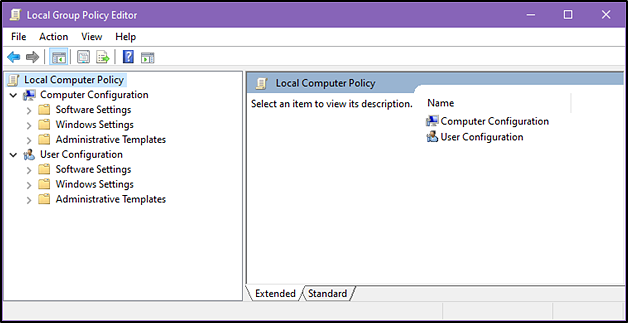
Figure 1. Local Group Policy Editor window
-
In the left pane, navigate to Computer Configuration ➔ Administrative Templates ➔ Windows Components (indicated in figure 2).
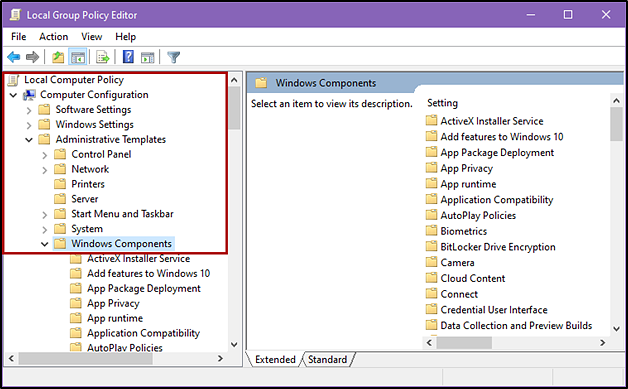
Figure 2. Windows Components panel
-
In the Windows Components panel in the left pane, scroll down to the [Tablet PC] folder icon—indicated in figure 3—and double-click it.

Figure 3. Input Panel in the Local Group Policy Editor
- Double-click to select the [Input Panel] icon.
- In the Input Panel group, select a policy setting to view its description or double-click it to change its state; current policy settings are shown in the State column, which is also indicated in figure 3.
- To change a setting, double-click on that item in the Setting column to open the Disable [policy setting] dialog box, which is shown in figure 4 for the setting “Disable text prediction.” The following settings should be adjusted if set differently from the list that follows:
- Turn off AutoComplete integration with Input Panel
- Prevent the [Input Panel] tab from appearing
- For tablet pen input, do not display the [Input Panel] icon
- For touch input, do not show the [Input Panel] icon
- Disable text prediction

Figure 4. Disable text prediction screen
- To enable the setting, double-click the item, select the Enabled radio button, and then select [OK]. This dialog box also gives the user the option to disable the setting. Select [Apply] and then the [Next Setting] or [Previous Setting] button to move to the next or previous setting displayed in the “Settings” list.
- Close the Local Group Policy Editor.
Configuring the Touch Keyboard on Microsoft Surface Pro Tablet
Some students using Surface Pro tablets and accessing the touch keyboard may have the touch keyboard disappear when they select outside a text box while testing or when they type an answer into a text box and then select [Next]. Then, the touch keyboard fails to reappear when they select inside the next text box. To avoid these issues, a student’s touch keyboard must be set to show up automatically.
When following these instructions, note that the settings for the device the user is configuring may be slightly different than those in the figure due to user interface changes by the manufacturer.
To set the touch keyboard to show up automatically:
- Access the device’s Settings (which can be done on devices using Windows 10 and above by using the keyboard shortcut [Windows] + [I]).
-
Select [Devices] (indicated in figure 5).
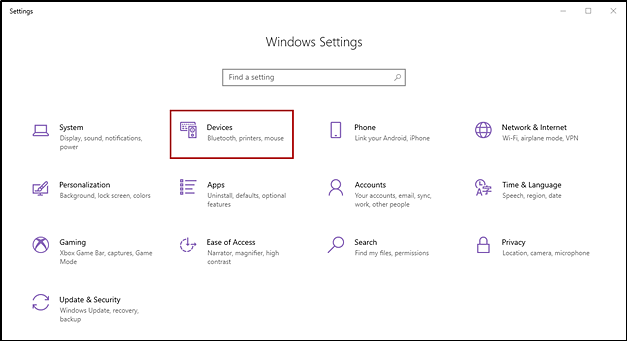
Figure 5. Windows Settings screen
-
Select Typing from the left pane (shown in figure 6).
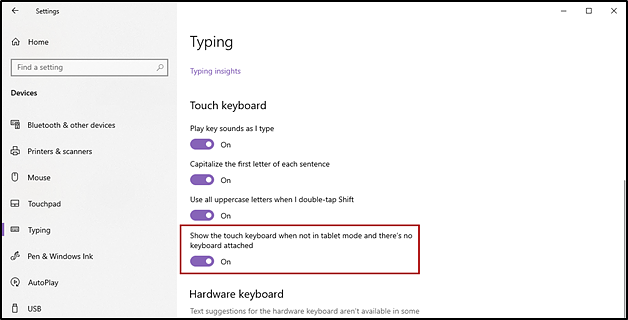
Figure 6. Touch keyboard settings screen
- Scroll down and toggle Automatically show the touch keyboard in windowed apps when there’s no keyboard attached to your device to the right (“on”), which is indicated in figure 6. (Depending on the version of Windows that is running, the text might alternatively read Show the touch keyboard or handwriting panel when not in tablet mode and there’s no keyboard attached.)
Disabling the Two-Finger Scrolling Feature in HP Stream Notebooks with Synaptics TouchPad
The trackpad software on the HP Stream notebooks can cause the secure browser to close and display an “environment not secure” error. This can occur when a student tries to use the advanced trackpad features such as scrolling gesture. The Synaptics TouchPad driver is the driver that allows full use of all trackpad features. To avoid this error and having the student exited from the secure browser, disable the TouchPad two-finger scrolling feature. Note that these instructions are applicable to any device using version 10 or 11 of Microsoft Windows.
To disable the TouchPad feature in HP notebooks with Synaptics TouchPad:
- Type touchpad in the Search field on the Taskbar or the Windows Start menu and then press [Enter] (or select its link).
-
Uncheck the Drag two fingers to scroll box in the “Scroll and zoom” section, as indicated in figure 7.

Figure 7. Touchpad screen
- Select the “X” in the upper-right corner of the Touchpad screen to close this screen and save the changes.
Configuring ZoomText to Recognize the Secure Browser
When displaying a test with a print (font)-size accommodation above 4× magnification, the secure browser automatically enters streamlined mode. To retain the standard layout of a test but display it with a print magnification above 4×, consider allowing the student to use ZoomText, a third-party magnification and screen-reading software that can be used with the secure browser after installation.
To ensure ZoomText recognizes the secure browser:
- If ZoomText is running, close it.
- Access the installation directory for ZoomText in File Explorer. For example, with ZoomText version 10.1, go to C:\Program Files (x86)\ZoomText 10.1\.
- In a text editor such as Notepad, open the file ZoomTextConfig.xml.
-
Search for the line containing the D2Dpatch property, similar to the following:
<Property name="D2Dpatch " value ="*,~dwm,~firefox,~thunderbird"/>
-
In the value attribute, add a value to represent the California secure browser:
<Property name="D2Dpatch " value ="*,~dwm, ~firefox,~Casecurebrowser,~thunderbird"/>
- Save the file.
- Restart ZoomText.
Disabling Automatic Volume Reduction
A feature in Windows automatically lowers or mutes the volume of some apps if Windows detects audio recording.
To disable automatic volume reduction in Windows:
-
Right-click the [Sound] speaker [
 ] icon in the task bar and select Sounds from the pop-up list. The Sound interface will open (figure 8).
] icon in the task bar and select Sounds from the pop-up list. The Sound interface will open (figure 8).
Figure 8. Control Panel Sound interface
- In the Sound window, select the [Communications] tab.
- By default, the selected option is Reduce the volume of other sounds by 80%. Change this to Do nothing (indicated in figure 8).
- Select [OK].
Disabling Fast User Switching in Windows
Microsoft Windows has a “Fast User Switching” feature that allows more than one user to be logged on at the same time. This is a security risk because students can potentially start a new Windows session during the test and use that session to search the internet for answers, pausing the test in the meantime. The following subtopics describe how to disable Fast User Switching for Windows, if it is enabled.
To disable Fast User Switching using the Local Group Policy Editor:
-
In the Search charm, type gpedit.msc (figure 9) and then press [Enter] or select the [Search] icon.
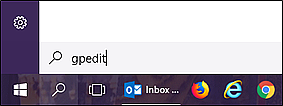
Figure 9. Windows Search box
- Select the Local Group Policy Editor to open the Local Group Policy Editor screen.
- Navigate to Computer Configuration ➔ Administrative Templates ➔ System ➔ Logon.
-
In the Setting pane, double-click Hide entry points for Fast User Switching (indicated in figure 10).

Figure 10. Logon panel in the Local Group Policy Editor
-
Select the Enabled radio button, and then select [OK] or [Apply]. All are indicated in figure 11.

Figure 11. Hide entry points for Fast User Switching screen
- Close the Local Group Policy Editor.
- In the Search charm, type run.
- Select the [Run] icon in the Apps pane. The Run dialog box opens.
-
Enter the command gpupdate /force into the Run dialog box and then select [OK] (figure 12). (Note the space before the forward slash.)
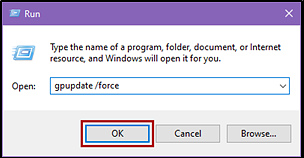
Figure 12. Windows Run dialog box
-
The Command window opens (figure 13). The message Computer Policy update has completed successfully is the notification that Windows has successfully disabled Fast User Switching.
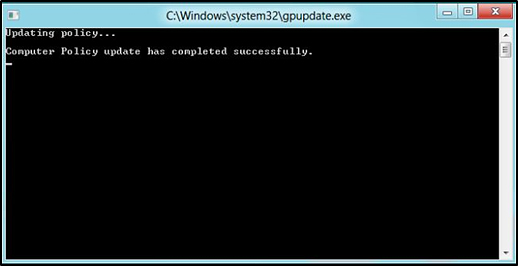
Figure 13. Notification in the Windows Command window
Disabling Screen Edge Swipe on Windows 10 and Windows 11 Touchscreen Devices
Swiping inward from the edge of the display on Windows 10 and Windows 11 tablets and laptops in tablet mode opens the Windows notification center. If this swiping gesture is not disabled and students taking a test in the secure browser on a Windows 10 or Windows 11 tablet or laptop in tablet mode swipe from the edge of the screen during a test, the test will be paused when the notification center opens, displaying any notifications that might appear there. The following instructions describe how to disable Screen Edge Swipe using the Local Group Policy Editor.
An individual with administrator privileges might also use the Registry Editor to roll this change out to multiple devices at once.
To disable Screen Edge Swipe using the Local Group Policy Editor:
-
In the Search charm, type gpedit.msc (figure 14 presents the Search box) and then press [Enter] or select the [Search] icon.
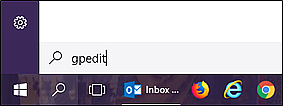
Figure 14. Windows Search box
- Select the Local Group Policy Editor to open the Local Group Policy Editor screen.
- Navigate to Computer Configuration ➔ Administrative Templates ➔ Windows Components ➔ Edge UI.
-
In the Setting pane, double-click Allow edge swipe (indicated in figure 15).

Figure 15. Edge UI panel in the Local Group Policy Editor
-
Select the Disabled radio button, and then select [OK] or [Apply]. All are indicated in figure 16.
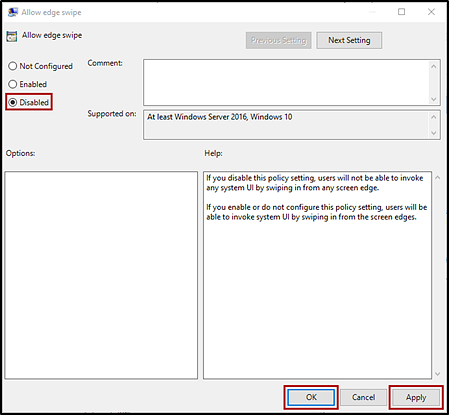
Figure 16. Windows Local Group Policy Editor selection
- Close the Local Group Policy Editor.
- Restart the device for the change to take effect.
Disabling Task Manager
The Windows Task Manager allows users to switch to applications running in the background. This is a security risk because students can switch to other applications while running the secure browser. Disable the Task Manager in Windows before the start of testing to mitigate this risk.
To disable the Task Manager using the Local Group Policy Editor:
-
In the Search charm, type gpedit.msc (figure 17 presents the Search box) and then press the [Enter] key or select the [Search] icon.
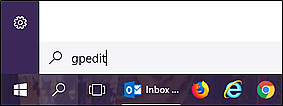
Figure 17. Windows 10 and Windows 11 Search box
-
Navigate to User Configuration ➔ Administrative Templates ➔ System ➔ Ctrl+Alt+Del Options and then double-click Ctrl+Alt+Del Options (figure 18).
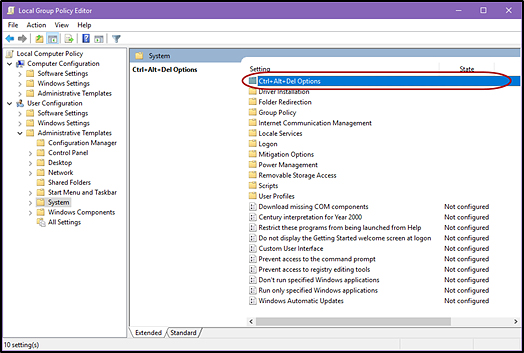
Figure 18. Local Group Policy Editor screen options
-
In the Setting pane, double-click Remove Task Manager (indicated in figure 19).

Figure 19. Ctrl+Alt+Del Options settings
-
Select the Enabled radio button in the Remove Task Manager screen shown in figure 20, and then select [OK].
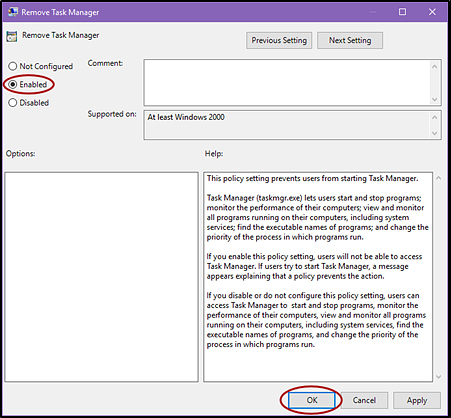
Figure 20. Remove Task Manager screen
- Close the Local Group Policy Editor.
Disabling App Prelaunching in Windows 10 and 11
Application prelaunch is a feature in Windows 10 that allows Universal Windows Platform apps, such as the Photos app or Edge web browser, to prelaunch and run in the background even if a user did not open the app directly. If these forbidden apps are running in the background, a student may be unable to start the Take a Test app or will be exited from the TDS if an app launches while the Take a Test app is running.
App prelaunching can be disabled by using a PowerShell command and editing the registry. For instructions on how to disable app prelaunching, refer to the Microsoft Windows support topic, K–12 assessment unexpectedly reports apps running in the background in Windows 10.
Secure Browser
This subtopic contains installation instructions for Windows systems under a variety of deployment scenarios, on devices running on versions 10, 10 in S mode, and 11. The secure browser does not run on other versions of Windows.
The instructions in this subtopic assume devices are running a 64-bit version of Windows and that the secure browser will be installed to C:\Program Files (x86)\. If a 32-bit version of Windows is running, adjust the installation path to C:\Program Files\.
Installation
Installing on an Individual Device
In this scenario, a user with administrator rights installs the secure browser using standard Windows. (If a user does not have administrator rights, refer to the subtopic Installing Without Administrator Rights.)
- If a user installed a previous version of the secure browser in a location other than a default location—C:\Program Files (x86)\CASecureBrowser\ (64 bit) or C:\Program Files \CASecureBrowser\ (32 bit)—manually uninstall the secure browser and its associated desktop shortcut. (If it was installed in the default location, the installation package automatically removes it.) Refer to the instructions in the Windows subtopic Uninstallation.
- Navigate to the CAASPP and ELPAC Secure Browsers website by visiting either the CAASPP Technology Resources web page or the ELPAC Technology Resources web page and then selecting the [Secure Browsers] link at either location.
-
Select the [Windows] tab and then select the [Download Secure Browser] button (figure 21).

Figure 21. [Download Secure Browser] button
- Locate the file to be downloaded.
- Take one of the following steps; this step may vary depending on the web browser being used:
- If presented with a choice to run or save the file, select [Run]. This opens the Secure Browser Setup wizard.
- If presented only with the option to save, save the file to a convenient location. After saving the file, double-click the installation file CASecureBrowser16.0-64bit.msi to open the setup wizard.
- If presented with the option to open a downloaded file, select [Open].
- Follow the instructions in the setup wizard. When prompted for setup type, select [Install] and follow the prompts.
- Select [Finish] to exit the setup wizard. The following items are installed:
- The secure browser in the default location C:\Program Files\CASecureBrowser\
-
A shortcut CASecureBrowser to the desktop (figure 22)

Figure 22. [CASecureBrowser] shortcut icon for Windows
- Ensure all background jobs, such as virus scans or software updates, are scheduled outside of scheduled testing days or time frames. For example, if testing takes place between 8 a.m. and 3 p.m., schedule background jobs outside of these hours, making sure they are completed by the time testing begins.
- Optional: Apply proxy settings by taking the following steps:
- Right-click the [CASecureBrowser] shortcut icon on the desktop and select Properties.
- Under the [Shortcut] tab, in the Target field, modify the command to specify the proxy (such as, "C:\Program Files (x86)\CASecureBrowser\CASecureBrowser.exe" proxy 1:http:fake-url.com:8080 aHR0cHM6Ly9jYS50ZHMuY2FtYml1bWFzdC5jb20vc3R1ZGVudA==). Refer to table 2 in the Proxy Settings for the Desktop Secure Browser subtopic for available forms of this command. Take the following steps first if the Target field is disabled:
- Close the Properties dialog box and delete the desktop shortcut for the secure browser.
- /Program Files (x86) subdirectory: Create a new desktop shortcut in Windows Explorer by navigating to the relevant 32-bit subdirectory, C:\Program Files (x86)\. Right-click the file CASecureBrowser.exe and then select Send To ➔ Desktop (create shortcut).
- /Program Files (x86) subdirectory: Create a new desktop shortcut in Windows Explorer by navigating to C:\Program Files\CASecureBrowser\, right-clicking the file CASecureBrowser.exe, and then selecting Send To ➔ Desktop (create shortcut).
- Right-click the desktop shortcut for the secure browser and select Properties.
- Select the [Shortcut] tab.
- Select [OK] to close the Properties dialog box.
- For more information about proxy settings, refer to the Proxy Settings for the Desktop Secure Browser subtopic.
- Run the secure browser by double-clicking the [CASecureBrowser] shortcut icon on the desktop (figure 22). The secure browser opens, displaying the student logon screen. The secure browser fills the entire screen and hides the task bar.
- To exit the secure browser, select [CLOSE SECURE BROWSER] in the upper-right corner of the screen.
Installing via the Command Line
In this scenario, a user with administrator rights installs the secure browser from the command line. If the user does not have administrator rights, refer to the subtopic Installing Without Administrator Rights.
- If a user installed a previous version of the secure browser in a location other than C:\Program Files (x86)\ (64 bit) or C:\Program Files\ (32 bit), manually uninstall the secure browser. (If it was installed in C:\Program Files (x86)\, the installation package automatically removes it.) Refer to the instructions in the Windows subtopic Uninstallation.
- Navigate to the CAASPP and ELPAC Secure Browsers website by visiting either the CAASPP Technology Resources web page or the ELPAC Technology Resources web page and then selecting the [Secure Browsers] link at either location.
-
Select the [Windows] tab and then select the [Download Secure Browser] button (figure 23).

Figure 23. [Download Secure Browser] button
- Locate the file that downloaded.
- Take one of the following steps; this step may vary depending on the web browser being used:
- If presented with a choice to run or save the file, select [Save] and save the file to a convenient location.
- If presented only with the option to save, save the file to a convenient location.
- Note the full path and file name of the downloaded file, such as c:\temp\CASecureBrowser16.0‑64bit.msi.
- Open a command prompt as the administrator.
- Type command into the Search field on the task bar.
- Right-click the [Command Prompt] icon in the “Best match” section of the Search pop-up list.
- Select Run as administrator from the shortcut menu.
- As necessary, type the administrator password for the device. The command prompt opens.
-
Run the command msiexec /I <Source> [/quiet] [INSTALLDIR=<Target>], which uses the components described in table 1.
Table 1. Components for Command Line Installation
Command Component Description <Source> Path to the installation file, such as C:\temp\CASecureBrowser‑Win.msi <Target> Path to the location to install the secure browser (If absent, it installs to the directory described in step 10; the installation program creates the directory if it does not exist.) /I Perform an install [/quiet] Quiet mode, no interaction For example, the command
msiexec /I c:\temp\CASecureBrowser‑Win.msi /quiet INSTALLDIR=C:\AssessmentTesting\BrowserInstallDirectory
installs the secure browser from the installation package at C:\temp\CASecureBrowser‑Win.msi into the directory C:\AssessmentTesting\BrowserInstallDirectory using quiet mode.
- Follow the instructions in the setup wizard. When prompted for setup type, select [Install].
- Select [Finish] to exit the setup wizard. The following items are installed:
- The secure browser to the default location C:\Program Files\CASecureBrowser\
-
A shortcut CASecureBrowser to the desktop (figure 24)

Figure 24. [CASecureBrowser] shortcut icon for Windows
- Ensure all background jobs, such as virus scans or software updates, are scheduled outside of scheduled testing days or time frames. For example, if testing takes place between 8 a.m. and 3 p.m., schedule background jobs outside of these hours, making sure they are completed by the time testing begins.
- Run the secure browser by double-clicking the [CASecureBrowser] shortcut icon on the desktop (figure 24). The secure browser opens, displaying the student logon screen. The secure browser fills the entire screen and hides the task bar.
- To exit the secure browser, select [CLOSE SECURE BROWSER] in the upper-right corner of the screen.
Copying the Installation Directory to Testing Computers
In this scenario, a network administrator installs the secure browser on one machine and copies the entire installation directory to testing computers.
- On the machine from where the user will copy the installation directory, install the secure browser following the directions in the subtopic Installing on an Individual Device. Note the path of the installation directory, such as C:\Program Files\CASecureBrowser.
- Identify the directory on the local testing computers to which the user will copy the secure browser file (it should be the same directory on all computers). For example, a user may want to copy the directory to C:\AssessmentTesting\. Ensure selection of a directory in which the students can run executables.
- Take the following steps on each local testing computer:
- Ensure all background jobs, such as virus scans or software updates, are scheduled outside of scheduled testing days or time frames. For example, if testing takes place between 8 a.m. and 3 p.m., schedule background jobs outside of these hours, making sure they are completed by the time testing begins.
- Copy the installation directory used in step 1 from the remote machine to the directory selected in step 2. For example, if the target directory is C:\AssessmentTesting\, create a new folder C:\AssessmentTesting\CASecureBrowser.
- Copy the shortcut C:\AssessmentTesting\CASecureBrowser\CASecureBrowser.exe – Shortcut.lnk to the desktop.
- Run the secure browser by double-clicking the CASecureBrowser shortcut on the desktop. The secure browser opens, displaying the student logon screen. The secure browser fills the entire screen and hides the task bar.
- To exit the secure browser, select [CLOSE SECURE BROWSER] in the upper-right corner of the screen.
Installing for Use with an NComputing Terminal
In this scenario, a network administrator installs the secure browser on a Windows server accessed through an NComputing terminal. Prior to testing day, the technology coordinator connects consoles to the NComputing terminal, logs on from each console to the Windows server, and starts the secure browser so it is ready for the students.
This procedure assumes that there is already a working NComputing topology with consoles able to reach the Windows server.
For a listing of supported terminals and servers for this scenario, refer to the System Requirements topic.
- Log on to the machine running the Windows server.
- Install the secure browser following the directions in the subtopic Installing on an Individual Device.
-
Open Notepad and type the following command (no line breaks):
"C:\Program Files (x86)\CASecureBrowser\CASecureBrowser.exe" ‑CreateProfile %SESSIONNAME%
- If a different installation path on the Windows server was used, use that in the previous command.
- Save the file to the desktop as logon.bat.
- Create a group policy object that runs the file logon.bat each time a user logs on. For details, refer to Appendix C: Creating Group Policy Objects to Assign Logon Scripts in Microsoft Windows.
- On each NComputing console, create a new [CASecureBrowser] desktop shortcut icon by taking the following steps. This subprocess is necessary because the default shortcut created by the installation program has an incorrect target.
- Connect to the NComputing terminal.
- Log on to the Windows server with administrator privileges.
- Delete the secure browser’s shortcut currently appearing on the desktop.
- Navigate to the secure browser’s installation directory, usually C:\Program Files (x86)\CASecureBrowser\.
- Right-click the file CASecureBrowser.exe and select Send To ➔ Desktop (create shortcut).
- On the desktop, right-click the new shortcut and select Properties. The Shortcut Properties dialog box appears.
-
Under the [Shortcut] tab, in the Target field, type the following command:
"C:\Program Files(x86)\CASecureBrowser\CASecureBrowser.exe" ‑P%SESSIONNAME%
If a different installation path on the Windows server was used, use that in the previous command.
- Select [OK] to close the Properties dialog box.
-
Verify the installation by double-clicking the shortcut to start the secure browser (figure 25).

Figure 25. [CASecureBrowser] shortcut icon for Windows
Installing on a Terminal Server or Windows Server
In this scenario, a network administrator installs the secure browser on a server—either a terminal server or a Windows server. Testing machines then connect to the server’s desktop and run the secure browser remotely. This scenario is supported on Windows server 2016 R2.
LEA CAASPP coordinators or LEA ELPAC coordinators should contact the LEA Success Agent for instructions and technical support before the secure browser is installed using this scenario.
Installing Without Administrator Rights
In this scenario, the user copies the secure browser from one machine where it is installed onto another machine on which the user does not have administrator rights.
- Log on to a device on which the secure browser is installed.
- Copy the entire folder where the secure browser was installed (usually C:\Program Files (x86)\CASecureBrowser) to a removable drive or shared network location.
- Copy the entire directory from the shared location or removable drive to any directory on the target computer.
- In the folder where the user copied the secure browser, right-click CASecureBrowser.exe and select Send To ➔ Desktop (create shortcut).
- Ensure all background jobs, such as virus scans or software updates, are scheduled outside of scheduled testing days or time frames. For example, if testing takes place between 8 a.m. and 3 p.m., schedule background jobs outside of these hours, making sure they are completed by the time testing begins.
-
Double-click the desktop shortcut to run the secure browser (figure 26).

Figure 26. [CASecureBrowser] shortcut icon for Windows
About Sharing Over a Network
Resetting Profiles
A user who has been advised by the LEA Success Agent to reset the secure browser profile should take the following steps:
- Log on as an admin user or the user who installed the secure browser and close any open secure browsers.
-
Delete the contents of the following folders:
C:\Users\<username>\AppData\Local\CAI\
C:\Users\username\AppData\Roaming\CAI\
where username is the Windows user account where the secure browser is installed. (Keep the CAI\ directories; just delete their contents.)
- Start the secure browser.
Uninstallation
The following subtopics describe how to uninstall the secure browser from the Windows interface or from the command line. Older versions of the secure browser will be automatically uninstalled during the installation of a new version.
Uninstalling via the User Interface
Uninstall from either the Start menu by right-clicking CASecureBrowser; or in Settings ➔ System ➔ Apps & features and then following the instructions in the uninstall wizard.
Uninstalling via the Command Line
Take the following steps to uninstall the secure browser from the command line:
- Open a command prompt.
- Run the command msiexec /X <Source> /quiet, which uses the components described in table 2.
| Command Component | Description |
|---|---|
| <Source> | Path to the executable file, such as C:\MSI\CASecureBrowser.exe |
| /X | Perform an uninstall |
| [/quiet] | Quiet mode, no interaction |
For example, the command
msiexec /X C:\AssessmentTesting\CASecureBrowser.exe /quiet
uninstalls the secure browser installed at C:\AssessmentTesting\ using quiet mode.
Secure Browser for Windows and the Microsoft Take a Test App
Microsoft’s Take a Test app comes installed with Windows, which enforces a locked-down, secure testing environment similar to CAI’s secure browser. Users of the Take a Test app do not need to install the CA Secure Browser on the testing machine.
Creating a Dedicated Test Account for Non–Permissive Mode Users
Users not using permissive mode should create a dedicated test account for the Take a Test app; permissive mode features will not be available when using this method. To access permissive mode features, refer to the next subtopic, Creating Desktop Shortcuts for Permissive Mode Users.
Take the following steps to create a dedicated test account:
- Sign in to the device with an administrator account.
- Go to Settings ➔ Accounts ➔ Access work or school ➔ Set up an account for taking tests.
-
Select an existing account to use as the dedicated testing account.
- In the Enter the test’s web address field, enter
https://ca.tds.cambiumast.com/student. - Select [Save].
The student can now sign in to the dedicated account to take the specified test.
Creating Desktop Shortcuts for Permissive Mode Users
Permissive mode users should create a desktop shortcut for the Take a Test app. Take the following steps to create a desktop shortcut for Take a Test:
- Log on to Windows as the user taking a test.
-
Right-click on the Desktop and select New ➔ Shortcut. The Create Shortcut dialog box appears (figure 27).
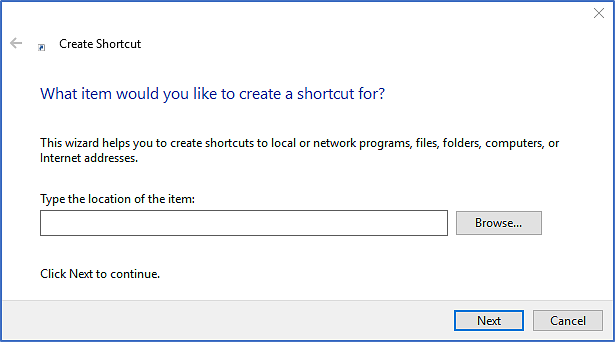
Figure 27. Create Shortcut dialog box
- In the Type the location of the item field, enter ca-edu-secureassessment:https://ca.tds.cambiumast.com/student
- Select [Next].
- In the next dialog box, enter a name for the shortcut in the Type a name for this shortcut field.
- Select [Finish].
The shortcut appears on the desktop. To run the Take a Test app, double-click the shortcut. To exit the Take a Test app, press [Ctrl] + [Alt] + [Del].

